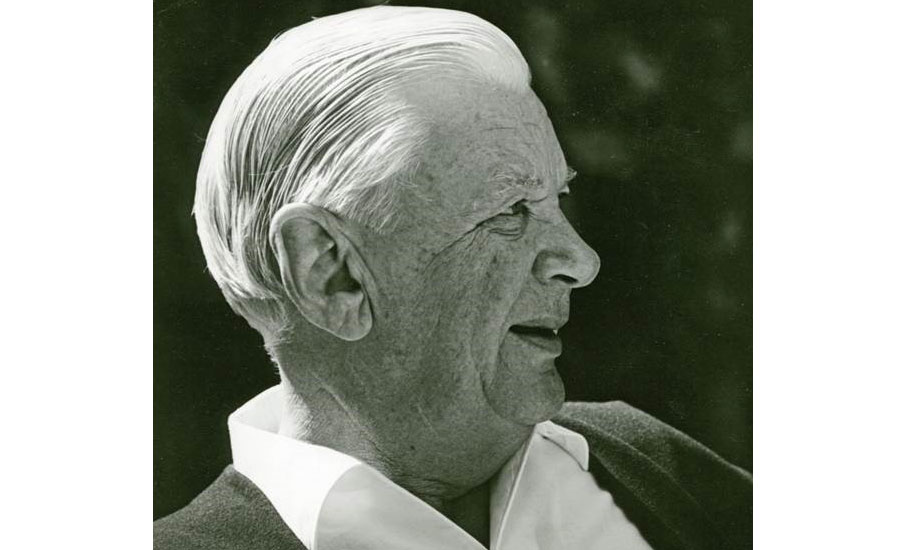AMESBURY, Mass. — Carl Georg Munters, founder of air treatment solutions company Munters, has been recognized as an ASHRAE Pioneer of the Industry. ASHRAE’s Pioneer of the Industry award honors deceased individuals who have made milestone contributions to the growth of the HVACR industry and have shown evidence of distinction — either technically or academically.
The inventions of Carl Munters have had a major impact on the industry. The basic principle of desiccant dehumidification developed by Munters more than 60 years ago is still the most efficient drying technique known today. During his lifetime, Munters was granted more than 1,000 patents, and most of his inventions are still in use today.
Munters, born March 22, 1897 in Dala-Jama, Sweden, began inventing at a young age. He graduated from the Stockholm Norra Real Upper Secondary School in 1917 and by 1918 had created his first patent – a starting crank that did not kick back for combustion engines.
After graduating from the Royal Institute of Technology in 1922, Munters filed a patent application relating to the household refrigerator. This application, known as the “Platen-Munters" refrigerator design, had no moving parts and used the absorption principle with ammonia as a cooling agent.
The creation of the refrigerator was aimed at residential use and featured a small gas flame at one end while allowing ice to be produced at the other. The “Platen-Munters” refrigerator design is still sold today for use in house trailers, campers, and boats where gas is suitable fuel.
Munters, through collaboration with John Tandberg, also developed foam plastic (known by the Dow Chemical trademark as Styrofoam). Foam plastic was made to expand by introducing soluble gas under pressure into the melted substance. When the pressure was quickly lowered, the substance bubbled and hardened into a highly porous structure that turned out to have excellent insulating properties.
Although Munters envisioned its use for insulating refrigerators, the product was used in life vests and rafts during World War II. Today it exists in numerous forms as insulating and packaging material. Though foamed plastic is not often used in HVAC applications, it is likely the most widely used of Munters’ inventions.
In 1953, Munters and his associates made a big breakthrough in developing efficient heat and mass transfer surfaces. They developed structures using thin, tightly bound corrugated sheets that provided enormously higher efficiency in a heat transfer device of any given size. The new structures were dramatically smaller.
Munters and his colleagues immediately started to pursue innovative uses for these structures such as compact heat exchangers, cooling towers, dehumidifiers, humidifiers, and heat recovery units. Today these inventions are known as heat recovery wheels, evaporative air cooling, and humidification media. One year later, his team started to develop a compact but highly efficient fill for cooling towers. Munters was actively promoting indoor environmental quality and sustainability in the 1950s.
Munters’ inventions were based on simple heat and mass transfer and used no refrigerants or compressors. Much like the focus of his inventions, the Munters Corp., founded in 1965 in Fort Myers, Florida, tested and manufactured cooling towers, evaporative cooling media, and the residential air conditioner with no compressor. This equipment produced because Munters’ ideas has benefited millions of people worldwide.
The Munters companies today now employ more than 3,000 employees in 30 countries and six continents. The inventions of Munters have evolved into the core technologies of energy efficient, sustainable HVAC equipment, and many of his innovations are still finding new markets today.
Carl Georg Munters died on March 29, 1989 at the age of 92. His legacy and tremendous contributions to the HVACR industry will not soon be forgotten.
For more information, visit www.munters.com.
Publication date: 2/10/2017
Want more HVAC industry news and information? Join The NEWS on Facebook, Twitter, and LinkedIn today!


Report Abusive Comment